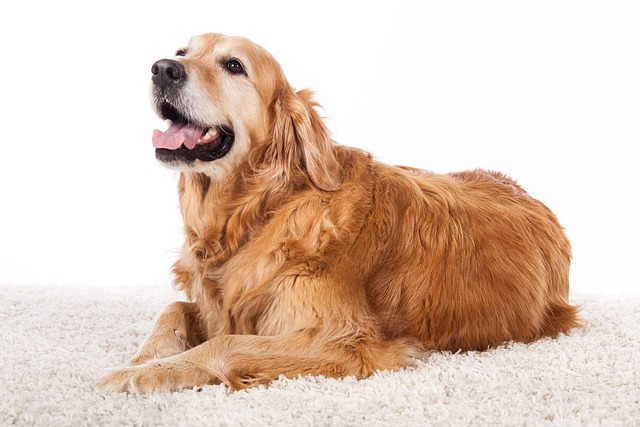
How can I tell if my dog's heatstroke is serious
Let’s be real: It’s a sticky August morning in Los Angeles, and you took your 2-year-old Golden Retriever, Max, for a walk a little later than usual
It’s Monday morning, and you’re rushing to get ready for work—only to find your favorite blazer covered in clumps of fur. Your 2-year-old husky, Koda, looks up at you with a wagging tail, seemingly proud of his handiwork. The couch, the carpet, even your coffee mug has a few white tufts. “Is there any way to slow this down?” you wonder, grabbing a lint roller for the third time this week. For new dog owners in the U.S., managing shedding feels like a full-time job, but with the right steps, you can cut down on the fur—without sacrificing snuggles.
Shedding is a dog’s natural way of replacing old hair with new growth, but some factors make it worse. Breeds with double coats (like Koda, golden retrievers, or German shepherds) shed heavily seasonally, “blowing” their thick undercoats in spring and fall to adapt to temperature changes. Short-haired dogs, like beagles, shed year-round but with finer fur that hides until it’s on your black pants. Diet matters too: a lack of omega-3 fatty acids can make hair dry and brittle, leading to more breakage. Stress—from a new apartment, vet visits, or even a chaotic morning routine—can also crank up shedding, as Koda’s body reacts to tension by releasing more hair.
The first step to reducing shedding is grooming smarter, not harder. For double-coated dogs like Koda, invest in a slicker brush and an undercoat rake. Brush him outside (or over a trash can) 3-4 times a week, focusing on his back and sides where undercoat clumps. Start slow: let him sniff the brush, reward with a treat when he stays still, and say “Good boy, Koda!” in an excited voice. Positive reinforcement turns grooming into a game, not a fight. Short-haired dogs need a rubber curry brush—its nubs massage skin and collect loose fur with each swipe. Aim for 5-10 minutes per session; consistency beats occasional marathon brushing.

Diet plays a big role too. Swap Koda’s kibble for a formula with fish oil, flaxseed, or salmon as a main ingredient—these nutrients strengthen hair follicles, so less fur falls out. Add a teaspoon of plain pumpkin (canned, no sugar) to his meals; it’s rich in fiber, which supports healthy skin and coat. If he’s picky, try a fish oil supplement mixed into his food—most dogs love the taste.
Bathing can help, but don’t overdo it. Use a moisturizing, dog-specific shampoo (human shampoo dries out their skin, causing more shedding) and bathe Koda once every 4-6 weeks. Towel-dry gently, then brush while he’s still slightly damp to catch loose fur before it hits your couch.
Now, tie this to responsible pet care. In the U.S., rabies vaccines are mandatory—Koda needs his shots up to date, and a healthy dog sheds less than a stressed or sick one. When you take him for walks, always pack poop bags; even a well-groomed dog leaves waste, and fines in Chicago hit $200 for skipping this. Culturally, never scold Koda for shedding—he can’t control it, and yelling will stress him, making shedding worse. Instead, praise calm behavior during grooming with extra pets. In apartments, vacuum 2-3 times a week (focus on his favorite napping spots) and keep a lint roller by the door—your roommate won’t thank you for Koda’s fur on the shared blanket. At the dog park, a quick brush before leaving helps—less loose fur means fewer “surprises” on other dogs or kids’ clothes.
Reducing shedding isn’t about stopping it entirely—it’s about managing it. With regular grooming, a nutrient-rich diet, and a little patience, you’ll spend less time cleaning and more time enjoying Koda’s company. After all, a little fur is a small price to pay for those tail wags.

Let’s be real: It’s a sticky August morning in Los Angeles, and you took your 2-year-old Golden Retriever, Max, for a walk a little later than usual

You're enjoying a summer afternoon at the park when you notice your dog has stopped panting and appears disoriented - their gums are bright red

Let’s paint the picture: You’re in your Denver apartment, watching your 4-year-old Boston Terrier, Ruby, plop down mid-play session with her favorite toy

Many dog owners notice their pets nails seem shorter after regular walks,but how much does this daily activity actually help?The answer depends on where you walk—concrete sidewalks or asphalt streets gently file nails as a dog's paws hit the ground

Most dog owners notice their pup scooting across the carpet at some point, but few connect it to impacted anal glands. These small sacs near a dog’s rectum secrete a scent for marking territory

Most vets agree that regular dog teeth cleaning is key to avoiding painful dental issues later. For healthy adult dogs, a professional cleaning at the vet’s office every 12 to 18 months usually works well.